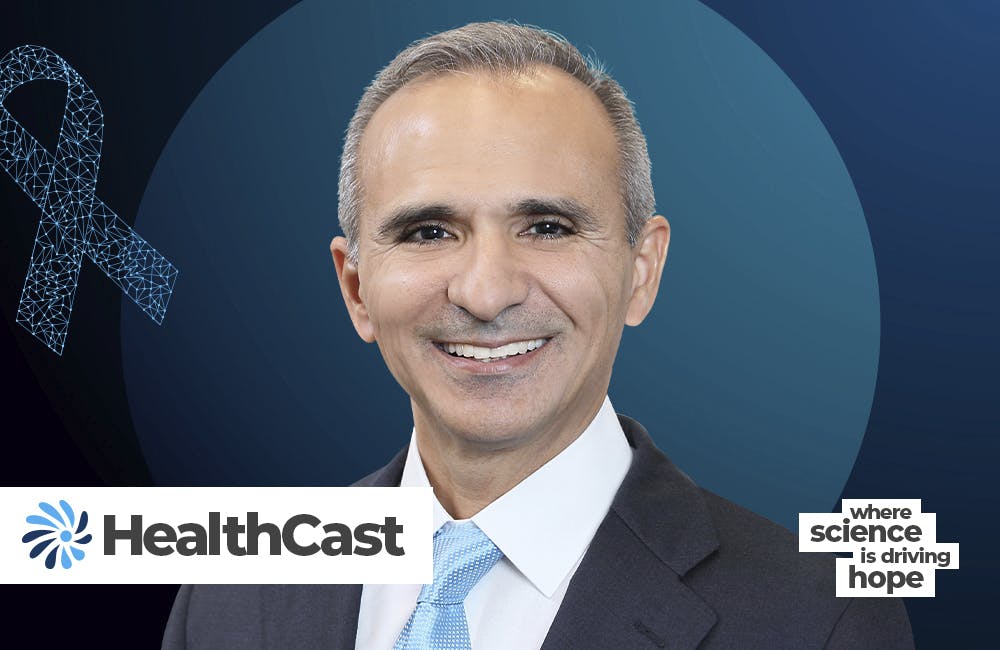VA Ramps Up DEI&A Efforts for Improved Services
White House legislation prompted VA to accelerate diversity strategies across the enterprise and ensure equitable service delivery to all veterans.

President Joe Biden’s 2021 executive order on advancing racial equity and support for underserved communities spurred the Department of Veterans Affairs to develop its new 2022 Equity Action Plan, which outlines how the agency will combat historic inequities like racial and gender discrimination.
Over the past five years, VA has expanded programs for underserved communities, including reproductive health care and women’s services and data dashboarding techniques to better understand minority populations’ needs to ensure the agency is delivering equal access to services for all veterans.
“We’re fighting like hell to maximize access to world-class care for vets across America,” VA Secretary Denis McDonough said during the Nov. 7 NPC Headliners Luncheon. “We’re continuing to fight like hell to make sure all veterans feel welcome and safe at VA. Not some veterans. All veterans.”
The executive order calls on agency heads to consult with the Assistant to the President for Domestic Policy and Director of the Office of Management and Budget (OMB) to create a plan to address barriers that limit full and equal participation for underserved communities and individuals seeking to enroll in or access federal benefits, services or programs.
In VA’s April 2022 Equity Action Plan, the agency outlined DOD’s historically inequitable distribution of services over the years such as racial discrimination in the armed forces and exclusionary policies such as “Don’t Ask, Don’t Tell,” which discriminated against LGBTQ service members.
“Other instances of inequities faced by underserved veterans include disparities in claim rejection rates, unequal posttraumatic stress disorder (PTSD) compensation rates, and address discipline and discharge disparities faced by underserved veterans,” the document states.
The action plan outlines a new strategy to advance an inclusive environment that values diversity and provides equal access to care, benefits and services. The plan called attention to new areas of focus including developing a data monitoring foundation, improving access to services, addressing health equity for underserved veterans and more.
The action plan also highlighted areas where VA will continue to progress efforts supporting LGBTQ veterans and women veterans. Armed with the strategy, VA leaders are now driving aggressive implementation.
“[VA is] trying to improve access for all of our veterans, get them access to high quality care and make sure that they achieve equitable health outcomes,” VA’s Executive Director of the Office of Health Equity Dr. Ernest Moy told GovCIO Media & Research in an interview.
Developing Data Dashboarding
VA’s Office of Health Equity will prioritize leveraging and analyzing veteran data to develop reports for specific populations to better understand underserved populations and identify gaps that still need to be filled in FY 2023. The office is using these insights to collaborate with the Veterans Health and Benefits arms, so the agency can deliver unified care.
“One of the things that we do is to try to raise awareness of issues of disparities among veterans and we put out lots of different kinds of products to the general public, to veterans, to providers, to VA policymakers, to external policymakers, to have them best understand the disparities that we do observe in our system,” Moy explained.
These data insights are informing policy and making language more equitable and inclusive for all populations, Moy added. This office is also developing data dashboards for VA health networks and providers to increase visibility of specific care needs.
“A lot of what we do is take that data and slice and dice it so that we can create dashboards that will allow – anywhere from networks to individual providers – to understand their overall quality of care, as well as the care that they’re delivering to different groups of veterans, and seeing where there are differences,” Moy said. “We also then can direct them to particular interventions that they can then activate to try to mitigate some of the differences that are observed.”
The demand for data dashboards and visualization to highlight health disparities and inequities has “grown tremendously,” Moy added.
To accommodate the new demands, Moy is leading the charge to develop a more formal structure to communicate information and ensure it gets into the right hands – a top priority in FY23. VA is also building a curriculum that will teach staff about health equity, build it into their scope of work and drive equitable outcomes.
“The ultimate goal is when nobody needs to think about equity, because they’re always thinking about equity,” Moy said. “We want it to be so internalized that, whenever they are looking at a policy problem or a clinical problem, equity is right there. So that they don’t have to think about ‘Oh, does this affect equity?’ But rather it’s just part of their decision-making process.”
Expanding Specialized Health Care
President Biden’s 2023 budget allocates $9.8 billion for women veterans’ health care, including $767 million for women-specific care. VHA aims to increase internal capacity to provide on-site women’s comprehensive care and specialty services by ongoing and enhanced provider training, hiring initiatives, using telehealth and improving access to community providers to fill gaps in women’s services if needed.
The funding will better support access to comprehensive specialty medical and surgical services for women veterans, increased access to infertility counseling and assisted reproductive technology and zero copayments for contraceptive coverage, a critical focus area following the Supreme Court’s June 2022 Dobbs v. Jackson ruling.
“Access has always been a big priority,” Dr. Sally Haskell VHA’s deputy chief officer for clinical operations and national director of comprehensive women’s health within VHA’s Office of Women’s Health Services told GovCIO Media & Research. “One of the things we want to make sure is that we have all the providers we need in our facilities, we have providers who are trained and knowledgeable on women’s health, and that we have the space and equipment we need to provide care to women.”
The agency also set a new goal of having at least two specially trained or experienced women’s health primary care providers at every site of care, including VA’s community-based clinics.
“We’re getting very close to that goal,” Haskell added. “We have 2 or more women’s health providers at all our medical centers, and we have them at 94% of our community-based clinics.”
Haskell said that most of the remaining 6% of community-based clinics are in rural areas and that tend to have few women veterans. VHA is training and hiring providers and leveraging digital technologies to help close gaps in these populations, and the agency has been successful with both phone and video telehealth appointments. VHA aims to integrate telehealth as a long-term service to meet more veterans’ needs.
Looking ahead, Haskell’s division will continue to work toward increasing access to all aspects of health care, including primary care as well as gender specific care, and ensure those high-quality services are available at every VA site. VHA is also investigating how toxic exposures impact women’s health care and certain conditions such as breast cancer following the passage of the PACT Act, as VA will start to process claims in Jan. 2023.
“We want women to feel like they belong at VA,” Haskell said.
Increasing Visibility Campaigns
Women make up approximately 10% of veterans and are the fastest growing population within the Veteran community, but they continue to face significant barriers and challenges to accessing necessary health care and other services, while experiencing a lack of recognition.
“We haven’t always done as well by women vets as we should have. So, we’re fighting like hell to serve them as well as they’ve served us,” VA Secretary Denis McDonough said at the Nov. 7 NPC Headliners Luncheon.
VA’s Center for Women Veterans takes a holistic approach to provide for the women they serve. The center’s director, Lourdes Tiglao, told GovCIO Media & Research one of the focus areas is advocacy both within VA and to the general population.
“This is a big part of the reason why the Center for Women Veterans exist, is making sure that we provide that context… as well as being an advocate and a champion for women veterans,” Tiglao said.
In 2017, Tiglao’s center launched the I Am Not Invisible (IANI) campaign to drive visibility of women veterans. The campaign aims to increase awareness and dialogue about women veterans and recognize their contributions, needs and experiences. The Center for Women Veterans also conducts outreach and engagement programs to increase representation and integrate veterans’ voices into the care and services VA offers.
“We are trying to ensure that we’re intentional and permeating every different community as much as we can,” Tiglao said. “When I first started this job, one of the first things that I said is that we are going to try to reach every woman veteran, no matter where they live, whether it’s in a territory, a different country, etc. So, this is one of the intentional ways that we do it is we’re trying to reprioritize and balance the places that we go to.”
VA also launched anti-harassment and anti-sexual assault policies and campaigns in 2019 to create a safer environment for veterans, and in 2021, VA assembled the Sexual Assault and Harassment Prevention Workgroup.
The group is charged with advising the Secretary and embedding VA’s commitment to create a culture where everyone is treated with respect, civility and compassion into the agency’s foundation by integrating and accelerating relevant policies and procedures across the agency.
“VA established enterprise governance to oversee harassment, sexual assault prevention and survivor care,” Lelia Jackson director of VHA’s Assault and Harassment Prevention Office told GovCIO Media & Research. “SHAPSCS is developing a robust and comprehensive enterprise operating model that will sustain the goals for an inclusive, proactive culture.”
As part of its new enterprise governance structure, VA launched its Sub Council on Sexual Harassment and Assault Prevention and Survivor Care (SHAPSCS) in 2021, which is comprised of subject matter experts, survivors of harassment or sexual assault and leaders across multiple VA programs to lead the agency’s fight against sexual assault and harassment at VA.
“For far too long, too many veterans who fought around the world to protect our rights and freedoms have had to fight brutal battles here at home for their own rights and freedoms. But at VA, those fights are over. In this administration, no Vet has to fight for the quality care and benefits they’ve earned—no matter who they are, where they’re from, or who they love,” McDonough said.
This is a carousel with manually rotating slides. Use Next and Previous buttons to navigate or jump to a slide with the slide dots
-

IRS Tax Filing Pilot Part of Digital-First Customer Experience Plan
Many taxpayers increasingly expect flexible, easy and self-directed digital interactions, agency leaders said.
5m read -

Federal Agencies Make the Case for Quantum
Amid development of emerging technologies like AI and machine learning, leaders see promise in quantum computing.
6m read -

NCI Program Unlocks Emerging Proteomic Data to Advance Precision Medicine
Researchers say sharing molecular cancer research data can expand cancer treatment and care.
32m listen -

Cyber Resilience and Recovery Amid Evolving Cyber Threats
Data durability is a key aspect of NIST’s cybersecurity framework for public and private organizations.
21m listen








